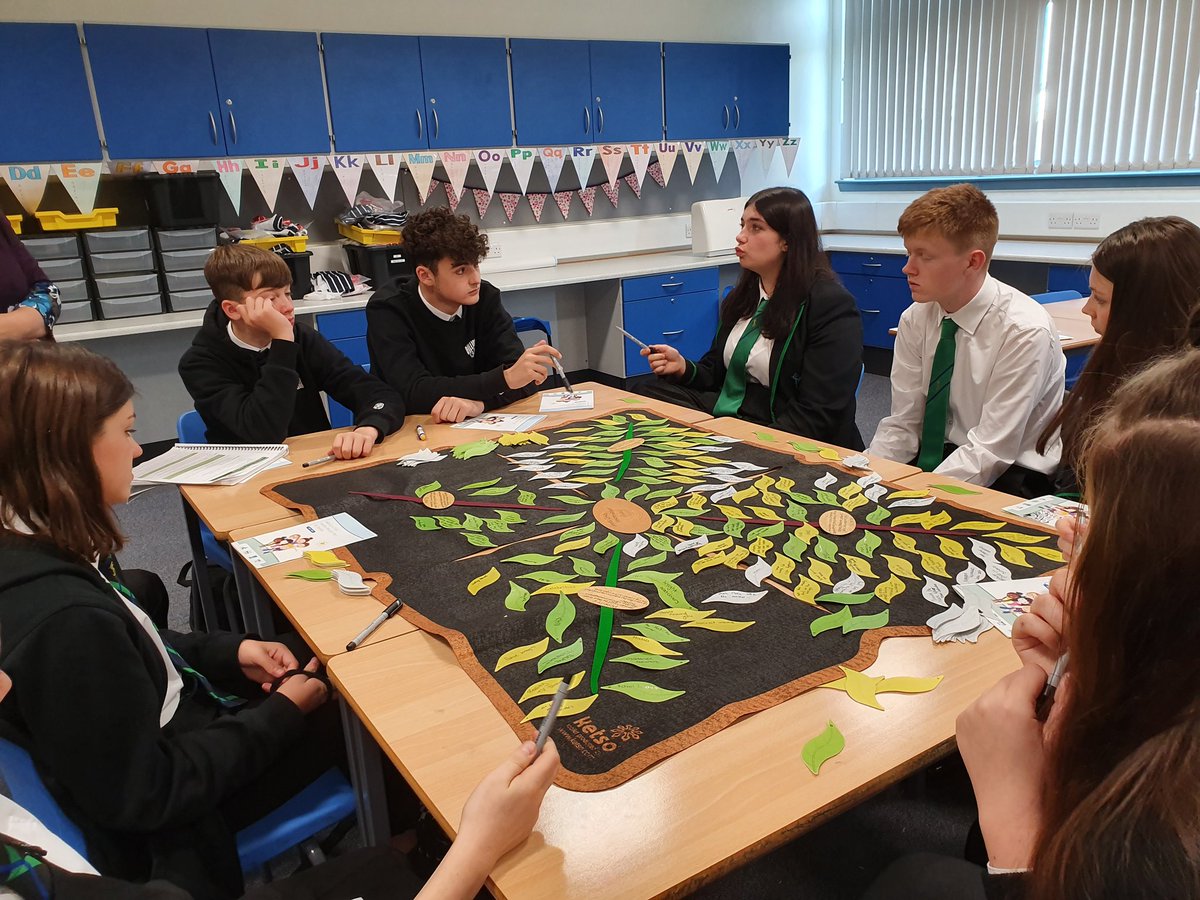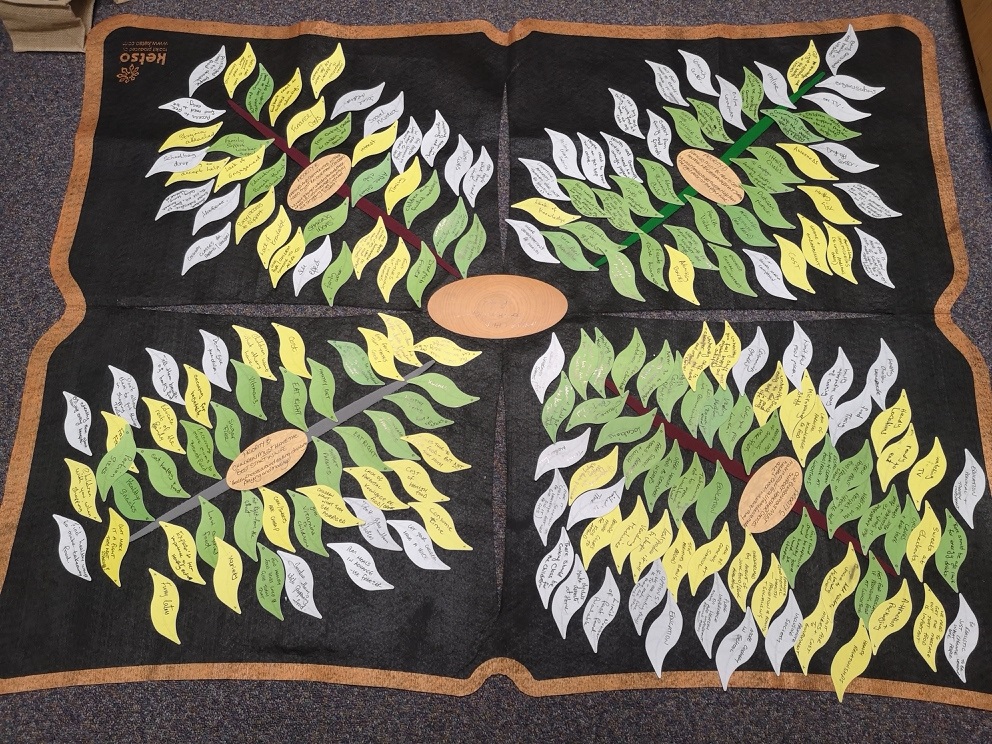Ketso
Ketso is a visual tool which can help different groups of people engage in genuine dialogue and develop creative solutions together.
The aim is to develop a shared picture of the group’s thinking, building a "tree" on a felt mat(s) with:
- a central trunk representing the main topic or question
- branches for each theme
- leaves for individual ideas and comments.
Resources needed
- Time to do: 1 to 2 hours for the workshop plus time to plan, analyse feedback and produce a report
- Staff: at least one facilitator per mat
- Cost: ££
- Equipment: Ketso kit (containing felt mats, leaves and branches and pens), tables and chairs for participants
Suitable for
- small groups
- face-to-face
Ketso can be used with any audience. Because pictures can also be used it is a useful tool for using with children, young people, people with learning disabilities, people living with dementia, and people who speak different languages.
How to do it
- Identify a central topic or question which will form the basis of the group discussion.
- Identify 4 to 5 (maximum 8) themes to structure the discussion. Each will become a separate branch on the mat. Leave at least one branch blank so that new themes can emerge. The branches should relate to the central topic. For example, themes for ‘Improving Health and Wellbeing’ might include:
- services and support
- physical environment
- food and healthy eating
- leisure and social
- education and skills
- work, work readiness and money
- Identify which questions you wish to ask, and which colour leaf you wish to use for each question. Use the different colours in sequence, so you ask different questions about the same central topic. Suggestions include:
- "What worked well?” (brown)
- "What can we do differently?" (green)
- "What challenges are there?" (grey)
- "Suggest possible solutions" (yellow)
- Distribute leaves and pens to participants, one colour at a time, explaining which question is being asked with each colour as they are introduced.
- Participants should spend a few moments on their own to develop their ideas individually before sharing them, writing one idea per leaf. This allows everyone to develop their thinking before they are influenced by others’ ideas and it ensures everyone has some ideas to share, not just the confident and dominant speakers.
- Remember to write with water-based ink on the coloured side so that the shapes can be rinsed and reused.
- Participants take it in turn to share their ideas, and place their leaves on the mat. Once all the ideas have been added, the group can discuss them, group similar topics and explore any in detail.
- Build in time at the end of the workshop for participants to prioritise the key points, using the included icon cards for dot voting. For larger events with multiple tables, you may want to build several rounds of prioritisation, including table swaps, to help you get a richer picture of what is important to participants.
- How you record and write up and discussion depends on the context. It may be enough to record the key themes, or to focus on the ideas which participants agreed were most important. Templates for recording results are available on the Ketso website. It is a good idea to take photos of the mats before moving or folding them to act as a back-up for later analysis. Check each leaf is readable and take additional close-up photos if necessary.
Tip
Introduce just one colour leaf, or question at a time. Keep the branches hidden until after the first round of developing ideas on the leaves. This allows participants to develop their initial ideas before seeing the themes you have provided. Surprising new themes and connections may emerge!
Advantages
- Promotes productive collaboration
- Everyone can be heard equally
- A time-efficient method of engaging with people
Challenges
- Cost of buying a kit, though it is cheaper to hire
More information
- The Ketso website has details on how to purchase or hire a kit, further information on how to use Ketso, example case studies and templates you can use.
Gallery


